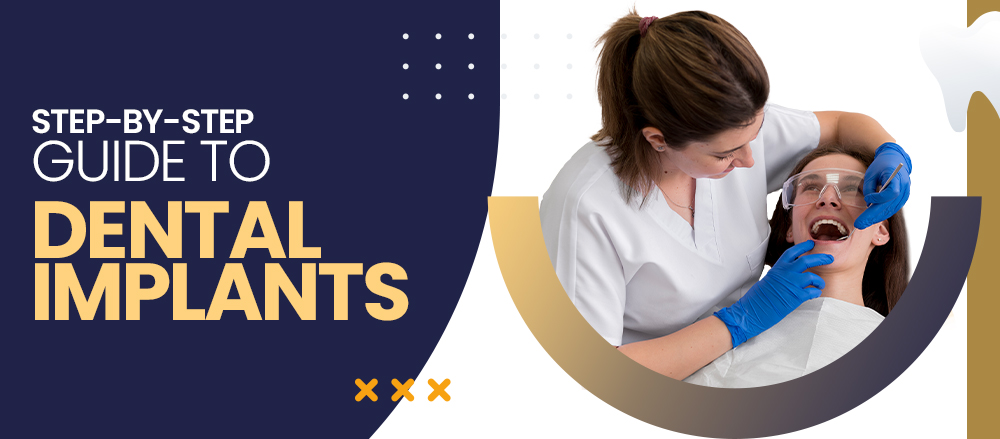Located at 20 Old Brompton Road – Just Steps from ![]() South Kensington Tube. Easy Access, Always.
South Kensington Tube. Easy Access, Always.
Located at 20 Old Brompton Road – Just Steps from ![]() South Kensington Tube. Easy Access, Always.
South Kensington Tube. Easy Access, Always.



Missing or lost teeth can make chewing hard, affect speech, and even make it hard to maintain good oral hygiene. Fortunately, dental implants are the gold standard remedy offered by modern dentistry.
Dental implants London are designed to mimic real teeth. They restore function and appearance, and also protect jawbone health and support your face shape.
From the initial dental appointment to the last repair, this guide takes you step-by-step through the entire implant process.
Your implant journey begins with a detailed consultation with a dentist. This step is helpfulindeciding if implants are right for both your oral and overall health.
This is what happens:
The initial consultation isalso the perfect time to raise your concerns and ask any questions. You might inquire about sedation choices, implant types, or the latest treatment methods.
After confirming you are a good candidate, your dentist designs a plan tailored to your needs.
A full plan usually covers the following:
Your dentist can also explain the implant materials utilised. Titanium is most common because it is strong and safe for the body. Ceramic implants may as well be recommended for front teeth, as they blend well with natural enamel.
Some patients lack enough jawbone to hold an implant effectively, especially if a tooth has been missing for years. For theseinstances, your dentist may suggest extra preparation procedures before placement. These can include:
Recovering from these steps often takes 3–6 months, based on the procedure. The implant can only be placed after proper healing.
After full recovery from the preparatory procedure, the implant is then inserted in place. Below is a step-by-step process of the placement sequence; although your dentist mightchange it to fit your needs.
The dentist will numb the spot with a local anaesthetic so you do not feel pain.If you feel anxious, sedation options may be offered.The mouth is cleaned and sterilisedso as to prevent infection risk.
The dentist makes a small cut in the gum to reach the jawbone. A precise opening is then created using special tools to hold the implant securely.
A titanium or zirconia implant is cautiously placed into the prepared site. It is tightened and adjusted for proper fit and stability.
Based on your needs, the dentist can insert a healing cap to guide gum shaping or attach a temporary crown or denture for instant looks and function.
After implant placement, you will return home with a list of aftercare guidelines you should adhere to. Osteointegration is the process by which the implant forms a bond with the bone over the course of the following 6 to 16 weeks.
This stage is vital because it sets the base for your new tooth or teeth.
An abutment refers to a small connector joining the hidden implant under the gum line to the visible crown, denture or bridge. It is usually composed of zirconia, titanium, or gold alloy.
To place the abutment, your dentist will do the following:
If gum tissue has grown over the implant area, a small procedure done under local anaesthetic may be recommended to uncover it.
Once the abutment is fitted, the dentist takes exact impressions of your mouth. These are sent to a dental lab, where technicians craft a crown, bridge, or denture to match your natural teeth in size, shape, and colour.
While waiting, you may receive a temporary crown or bridge to protect the abutment,besides keeping your smile looking complete.
This is the final stage, where your new tooth or teeth are fitted. It completes the implant process plus restores your smile and full function.
As soon as your custom restoration arrives from the lab, the dentist schedules a fitting appointment. During this visit, they will:
Dental implants London can last for decades, but only with proper care. So right after placement, your dentist will recommend aftercare measures such as:
Long-term care tips include:
With good habits, dental implants can stay strong and look natural for 25 years or even more.
Knowing each step of the implant process helps you feel prepared and confident. Although the journey takes time and may involve extra procedures, the results are life-changing and worthwhile. Dental implants London generally provide lasting strength, protect bone health, and restore a natural, beautiful smile.